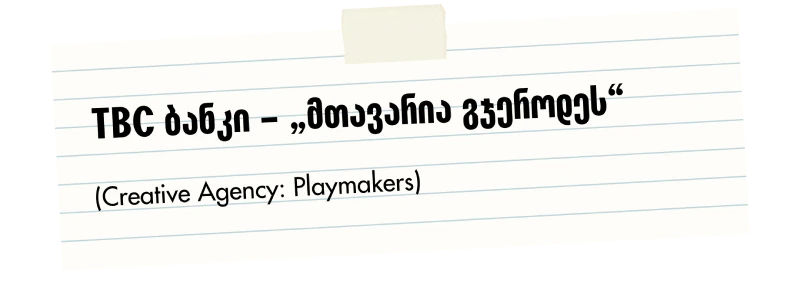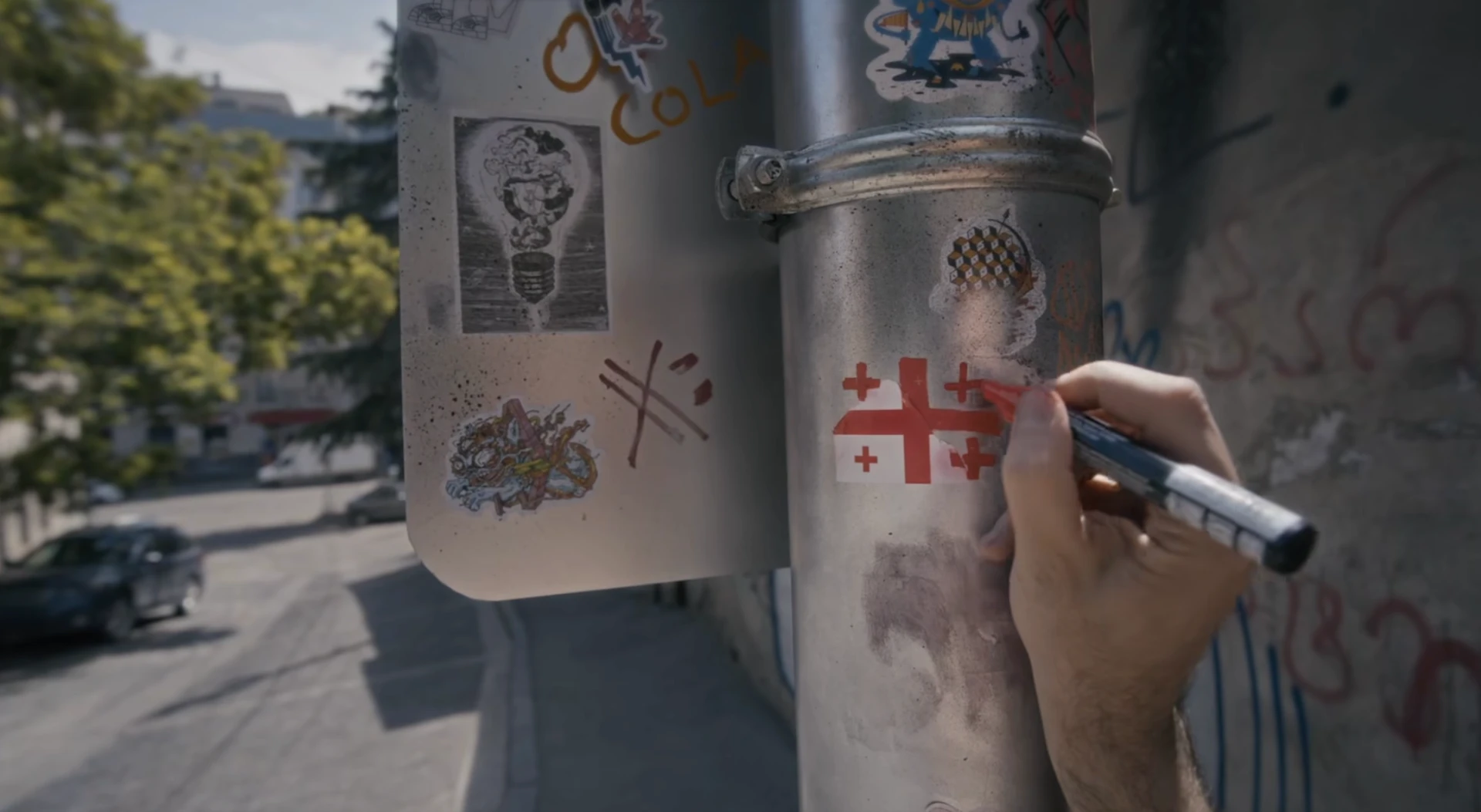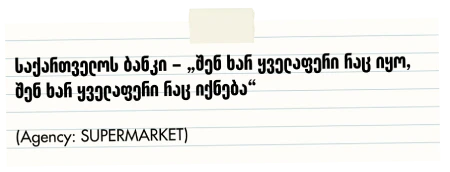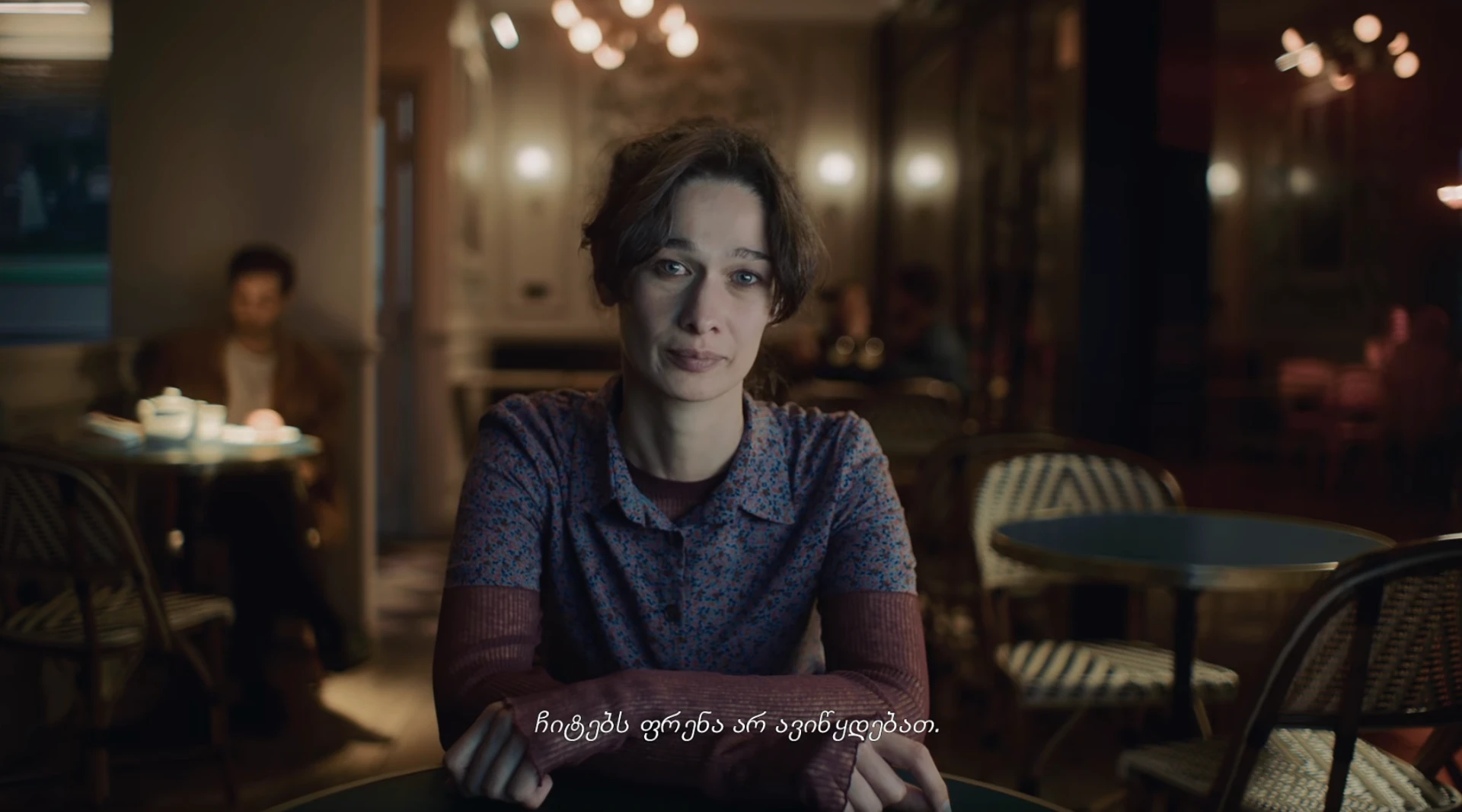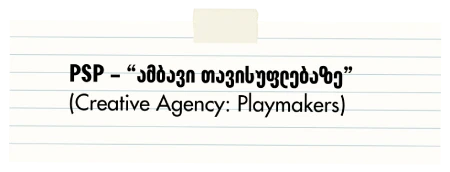what was the message from brands on may 26?
three videos, three different stories
For creative agencies, one of the most fruitful directions is campaigns created within the scope of festive marketing.
During such times, a strong script and solid direction usually mean that the main part of the campaign — the video — will be widely shared across all social platforms, and for at least one day, everyone will be talking about it.
There are a few key dates when we eagerly anticipate brand videos, and among them, the most significant is May 26, when Georgia celebrates its Independence Day. In general, for any marketing activity, the timing, context, and overall environment are crucial — in other words, relevance. No matter how good an idea or script is, it won't be effective if it doesn’t align with the time and the current sircumstances.
With that in mind, this year posed a serious challenge for Georgian creative agencies. The political crisis in the country, which began over a year ago, escalated into continuous protests in November and is still ongoing. This context could not be ignored. That’s why today a flag is more than just a flag, every symbol is more than just a symbol, and any message a company puts out this year is more than just a marketing idea — because the backdrop is different.
Today, your audience is not just an audience — today, they need your support more than ever, and they won’t forgive your silence. But what they’ll forgive even less is pretty, polished visuals with no real message behind them.
So, let’s take a look together: What did Georgian brands have to say this year for Independence Day?
Two days before Independence Day, TBC Bank released a spot built around this idea: “This is Georgia — the land of the most stubborn people.” The tagline drives it home: “The most important thing is to believe.”
In Georgian, the word ჯიუტი (“stubborn”) usually leans negative, yet the film flips that meaning, packing stubborn with grit, resilience, pride, and dignity.
What’s in the film?
Think of Georgia’s history told Gen-Z-style: super-condensed, lightly humorous, and laser-focused on the message that, despite countless upheavals, we’re still here, still standing, still stubbornly alive. It’s no accident that the storyteller is a Gen Z student—propaganda often claims “the youth don’t know our history.” Here, the teacher plucks the sleepy kid from the back row because—shock!—a hand actually went up. The “lazy, probably average-grade” kid strides to the blackboard and delivers a breezy, witty, heartfelt presentation.
The presentation slides change in sync with the student’s narration, backed by folk melody “Daisi,” stitching the whole story together.
Building an entire concept around a single, not-so-flattering adjective was a bold call, but it’s anything but dull. Humor and fresh, “Gen-Z-ish” language balance out the pathos that usually clings to patriotic storytelling. Judging by the reactions, every generation felt seen: older viewers loved the substance, younger ones the style.
This year, Bank of Georgia also told Georgia’s story—but not through a narrator. Instead, it unfolded through the very protagonists of history, speaking less with words and more with action.
The film opens with the first cluster of grapes. From there, one after another, pivotal figures and moments appear before us: Saint Nino, King Mirian III and Queen Nana, Shota Rustaveli, Akaki Tsereteli, Ilia Chavchavadze with the Iveria newspaper, the Act of Independence and the Founding Assembly’s iconic photo, Maro Makashvili, the Cadets, Nana Makaradze’s famous footage from April 9, Zurab Zhvania’s radio declaration—“I am Georgian, therefore I am European”—the August War and national hero Giorgi Antsukhelidze, floods, natural disasters, football… and, of course, the Georgian flag, which always holds a prominent place in Bank of Georgia’s commercials.
Using historical figures, events, or even fictional characters is a familiar in the creative industry. Recall Leavingstone’s campaign “The Country’s Future Is Now in Your Hands” for IRI Georgia, where Ilia Chavchavadze, Vazha-Pshavela, Ivane Javakhishvili, Kato Mikeladze, and others “came to life” to support the younger generation to vote. Even earlier, on the centennial of the First Democratic Republic, Leavingstone created Facebook pages for ten historic personalities and streamed four key events live, bringing the path to independence into real-time social media.
In the new spot, the heroes come alive once more—this time not through actors, but thanks to AI—producing an undeniably emotional video. Yet the feeling lingers: haven’t we seen this somewhere before? Another question surfaces: if we are telling Georgia’s history, where is the present? Against today’s backdrop, perhaps the most resonant inclusion is the footage of Giorgi Antsukhelidze.
There’s no need to speculate whether this video responds to recent days and the ongoing protests — it doesn’t just respond, it is the response itself. Directed by Giorgi Okmelashvili and narrated by Andro Chichinadze — both considered prisoners of conscience — the video also features a cast of actors who, over time, have become symbolic figures of the protest movement.
From prison bars to birdcage bars — let’s follow the symbolism.
It’s hard to even call it just a video; it’s more like a short film. The main character, Sofia, goes to the market every day, buys a caged bird, takes it to the forest, and sets it free.
— “Do you think they’ve forgotten how to fly?”
— “Birds don’t forget to fly.”
There is no call to action, just a story.
As mentioned above, current events are not just the backdrop here — they are the central theme. That’s exactly why this piece is so emotional, and at the same time, so hopeful: every day, Sofia sets one bird free, and birds don’t forget how to fly — no matter how much time passes.
Because of its direct connection to recent events, and the involvement of political prisoners and repressed artists, PSP’s video is especially emotional and powerful.
Three Brands, Three Videos, Three Different Stories
Now that we've reviewed all three, let’s analyze them using specific criteria:
Emotional Appeal
All three videos delivered strong emotional impact — though the source and depth of that emotion varied.
- PSP’s video hit straight to the heart. It was the most closely tied to current events, directly showing the main characters, the main pain, and the central story.
- Bank of Georgia evoked emotions of nostalgia and patriotic pride, though the emotional formula it used was familiar and conventional.
- TBC Bank’s video told Georgia’s story in a light, witty, and simple way, using a youthful tone that still carried emotional weight. The use of “Daisi” in the background added emotional depth and gave the seemingly light narrative a dramatic touch.
Creative Concept
- TBC’s video stood out creatively – the concept was built around a single word: “stubborn”. Using a student’s voice to say everything we do or don’t feel proud of was a bold narrative choice. This kind of storytelling — playing with tone and language — requires both courage and a sharp sense of cultural context.
- PSP’s video felt more like a short film than a commercial. It's rich in symbolism and told through a cinematic narrative. The creativity lies not in the format, but in how the core idea is interpreted.
- Bank of Georgia’s concept leaned on classic storytelling — well-scripted and visually polished, but followed a predictable structure. Strong, yet familiar. It leaves an impression of something we’ve seen before.
Brand Alignment & Target Audience Impact
Today, one of the biggest challenges for brands is remaining relevant to younger generations — understanding their interests, values, and goals.
- TBC’s campaign aligns tightly with this mission: strengthening the image of a youth-oriented brand that values clarity and simplicity in its communication. Most importantly, the brand is saying to young people: “I see you, I hear you, and I want to connect.”
- Bank of Georgia delivered what we’ve come to expect from them — a journey through the nation’s history that fills you with pride. But it raises a question: yes, honoring the past is important, but where is the present?
- PSP’s video perhaps broke expectations the most — and that’s exactly what made it effective. A pharmaceutical company stepped forward with a symbolic, value-driven message, giving people involved in the protest movement exactly what they needed most: hope. So, for those demanding brands take a stance, PSP won their hearts.
In Summary
Each of the three videos attempted to deliver a powerful message for Independence Day — one through a student at the blackboard, another through revived national heroes, and the third by releasing a bird from its cage.
This year’s May 26th campaigns proved that to make a lasting impact, brands can no longer rely on beautiful slogans or colorful visuals.
Nor is patriotic storytelling enough.
Today’s biggest questions are loud and clear:
What do you stand for? Where do you stand? And what are you telling your people?
the photographic materials used in the visuals belong to each respective brand and constitute their intellectual property.


